Booking a trip with your tax return? How to get the best bang for your buck
60% of Hopper users who are getting a tax return this year plan to spend some or all of it on travel.

Hayley Berg - Tue Apr 18 2023

It’s that time of year again when tax returns start to hit people’s bank accounts, and Americans are debating how to spend their refunds. For many Americans, travel remains a major priority after years of missed trips. In fact, according to a recent Hopper survey, 51% of Hopper users expect to receive a tax refund and of those, 60% of users getting a refund will spend some, or all, of the refund towards travel this year.
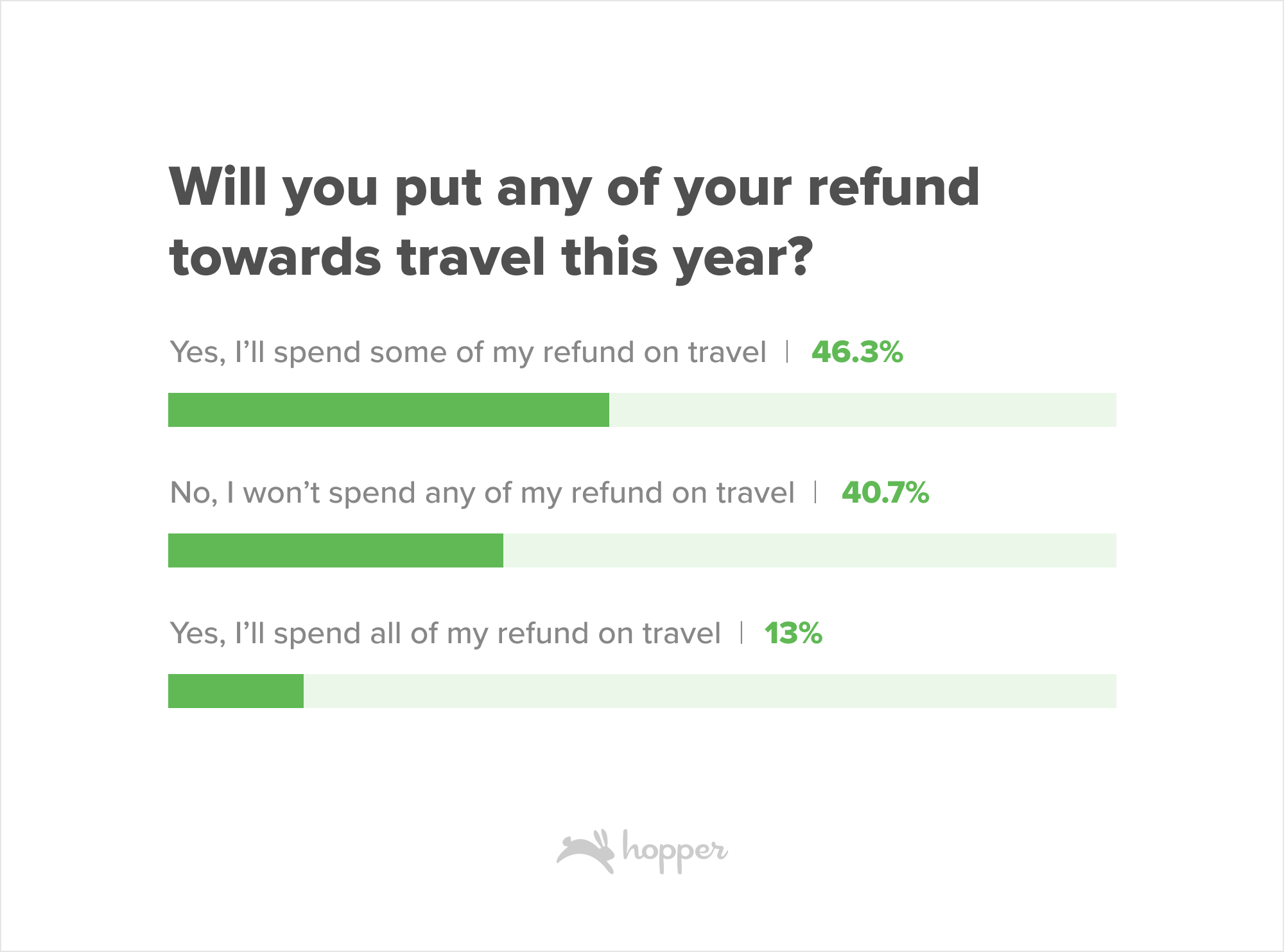
According to the IRS, the average tax refund for 2022 is $2,970 as of Mar. 31 — and the agency has already refunded nearly 62 million overpayments. (source: IRS) For many consumers though, they are getting less money in their returns this year – tax returns in January were averaging 11% lower this year than last year (source: IRS).
As a result, travelers are looking to stretch their travel budgets (and tax returns) further this spring and summer, and here’s how.
Destinations to Stretch Your Budget
Airfare to top international destinations has risen across the board this year compared to 2019 and 2022 as demand and costs remain sky high and airline capacity remains below 2019 levels. Current international airfare is averaging $1,091 round-trip, up 33.5% from this time last year. Where you travel is key, with certain destinations offering low airfare, low in country costs, or in some cases both.
Europe on a budget: Portugal & Spain
Europe is always a popular destination in the spring and summer, but it can also be one of the best places to find a good deal. The dollar has appreciated compared to the Euro (EUR) in the last 4 years, stretching 3.4% further than in 2019.
Though airfare to Europe remains high, Americans who are looking to get the most bang for their buck should consider Spain and Portugal. With a lower cost of living (and visiting!) cities like Lisbon and Seville can stretch your budget further. Both countries also offer access via train or short flight to much of the rest of continental Europe.
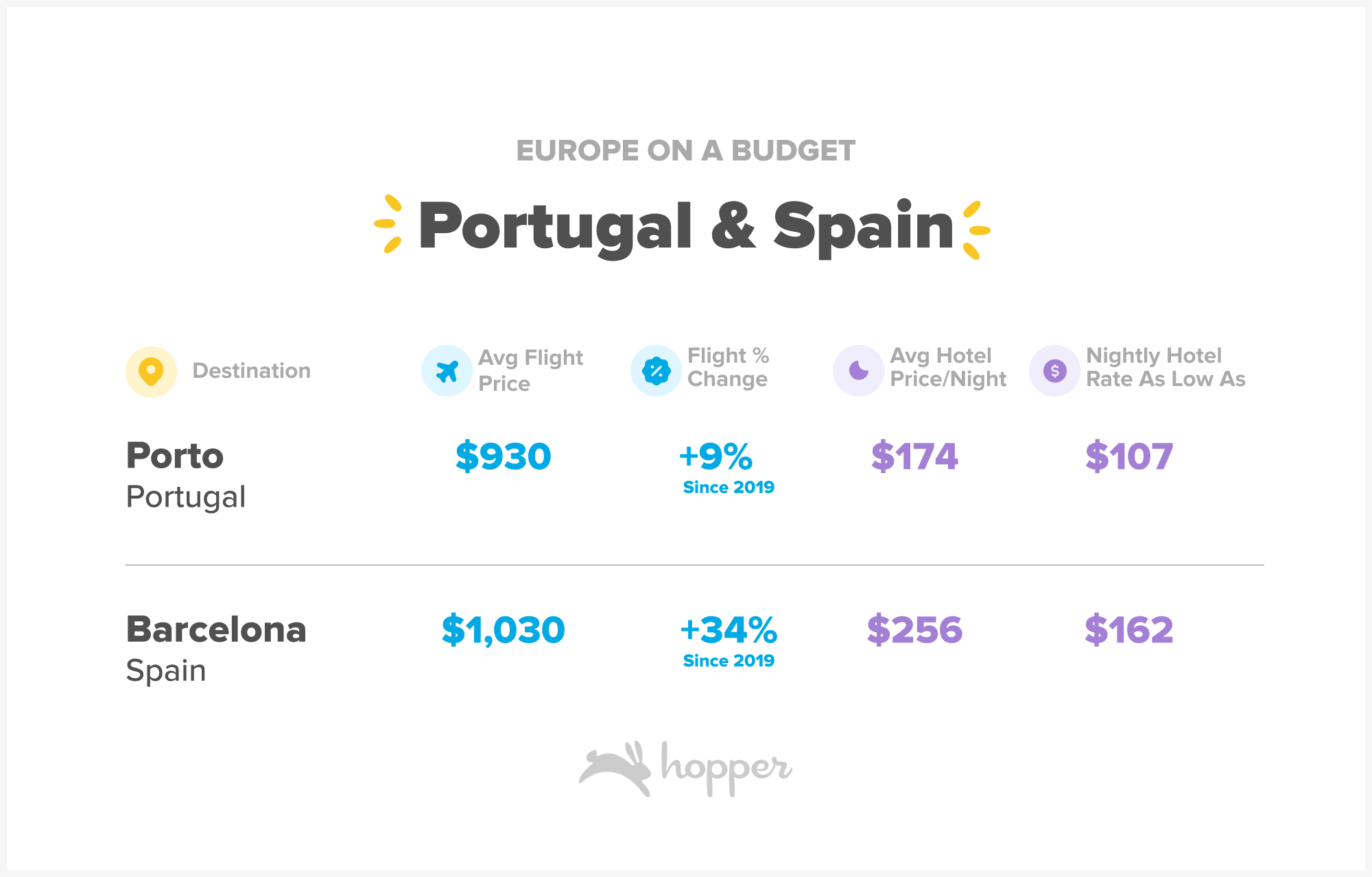
South America on a budget: Argentina & Brazil
South America can also be a good option for those looking to explore the world on a budget. Argentina’s currency (Argentine Pesos ARS) has depreciated rapidly compared to the USD driven by both political instability and economic challenges facing the country. Though airfare is 6% higher than in 2019, the dollar has appreciated by 3x compared to 2019 due to the rapid inflation in the country.
Similarly, the USD has appreciated 31% compared to the Brazilian Real (BRL) in 2019. Not only will you be able to stretch your dollar further, but travelers can expect to see hotel rates as low as $43 or $55 in some major cities.
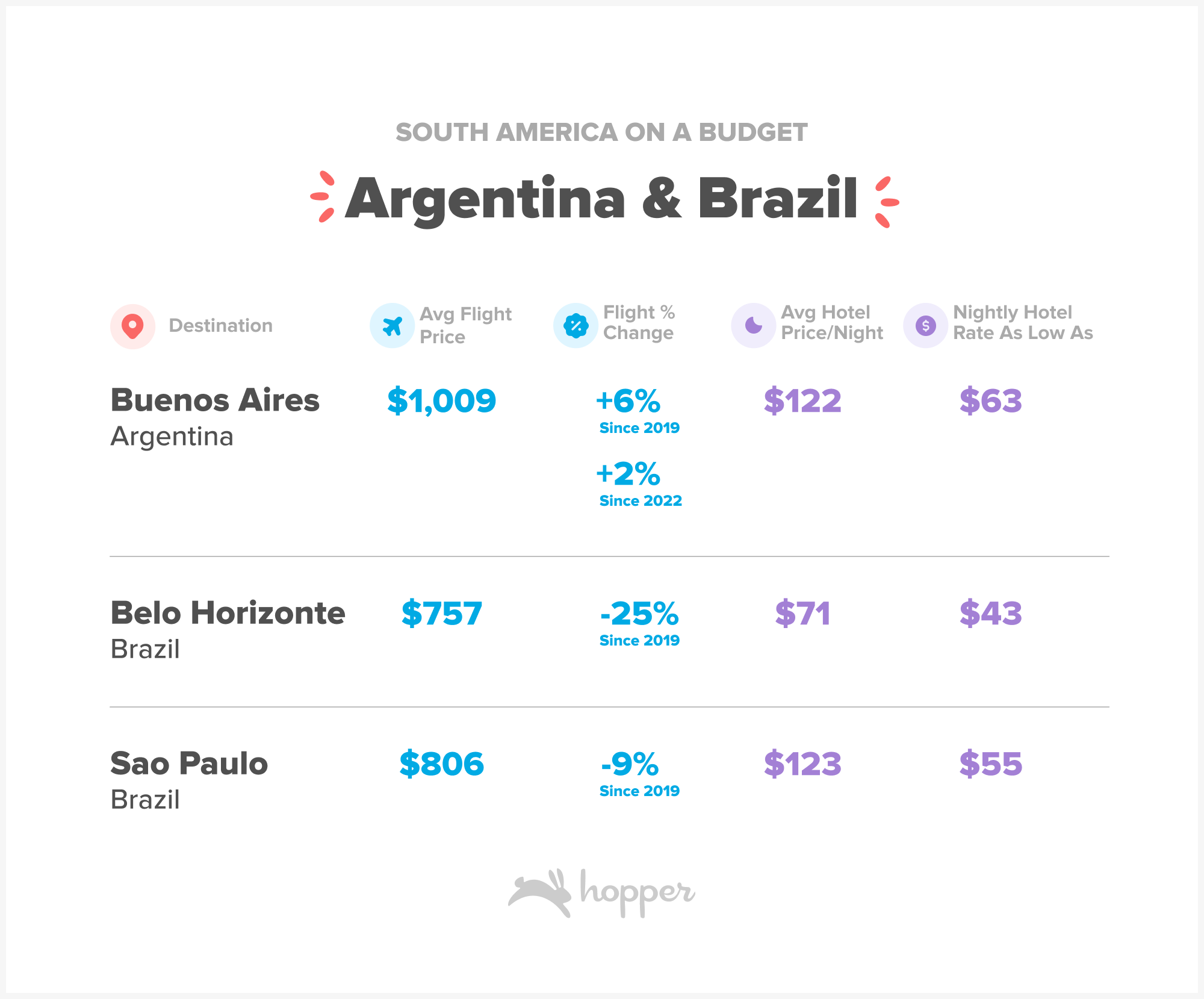
Scandinavia on a budget: Norway & Sweden
Scandinavian countries are seeing similar trends as the USD trends upward. The USD has appreciated by 24% compared to the Norwegian krone in 2019, and it has appreciated 13% compared to the Swedish krona. Flights to Norway are down slightly compared to 2019, but remain around $1,000 round-trip.
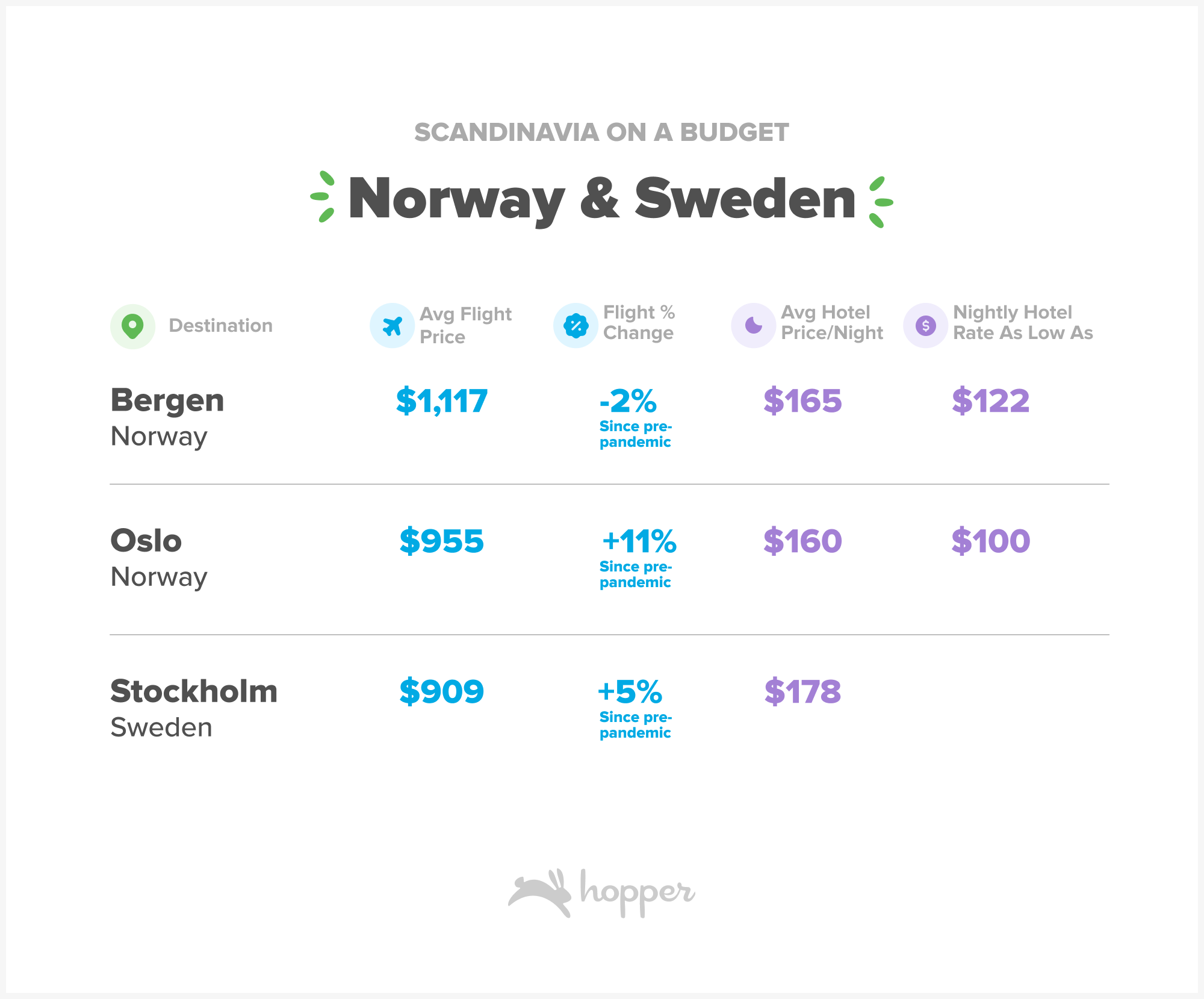
India
For those looking to explore Asia this summer, it will cost to fly there – airfare to India has risen significantly compared to pre-pandemic. However, once you are in-country, travelers can expect to see their USD stretch further than pre-pandemic. The USD has appreciated 19% compared to the Indian rupee (INR) in 2019.
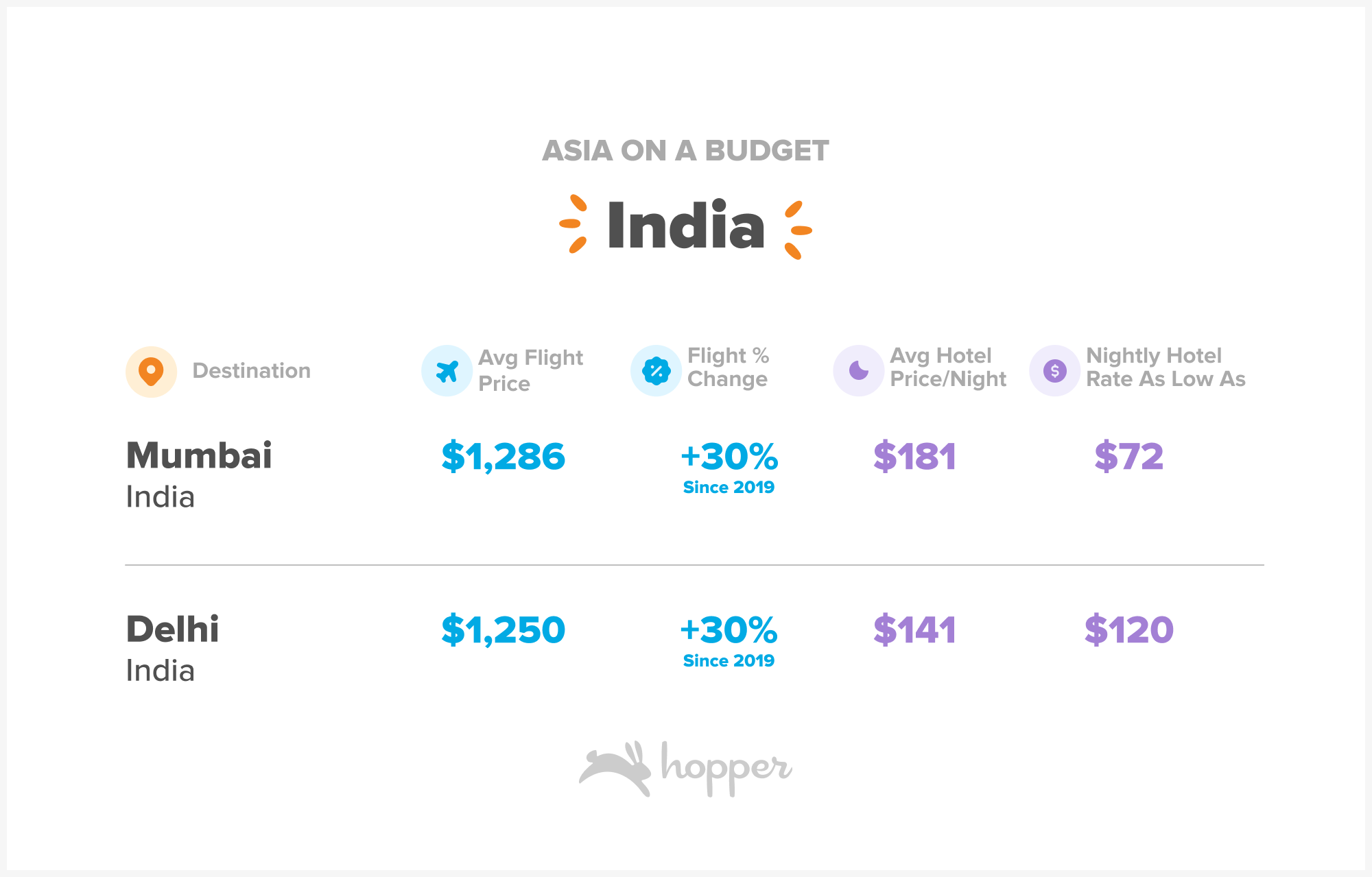
Quick Tips to stretch your dollar further:
Notify your bank and credit card companies before leaving the country to ensure you’ll have access to your funds, and understand any fees associated with using your cards or an ATM abroad.
Plan ahead! Many banks will allow you to order local currency before a trip, and will usually offer a better exchange rate than an airport cash exchange service and won’t charge additional fees you might incur using ATMs abroad.
When possible, pay in the local currency (including when you use your credit card!) when making purchases abroad to ensure you’re getting the best exchange rate and price.
Stay off the beaten path! Tourist heavy cities and towns are likely to have inflated prices for food, accommodations and more. Head somewhere more local, off the beaten path, to find restaurants and shops offering lower prices.
How to lower the overall cost of your trip?
Start monitoring prices for domestic trips 3-4 months before departure & 6-7 months in advance for international trips: For most domestic trips airfare will fall between one and three months before your departure, before rising rapidly in the last 3-4 weeks before takeoff. There is a sweet spot for flight prices, when airlines will be offering lower prices on average, and are more likely to offer promotional discounts and ultra low fares. Travelers often book international flights too far in advance or too last minute, overpaying significantly for their tickets. The key to scoring a good deal is to monitor prices in advance so you don’t miss the window when airfares drop. Use a price tracker like the Hopper app which will monitor prices for your trip in real time, then send you a notification when it’s the best time to buy your flight!
Book 1-2 months in advance for domestic trips & 3-5 months in advance for international travel: If you’re traveling over a popular spring or summer long weekend, start planning closer to 5-6 months in advance and expect to book 3-4 months in advance for the best prices and availability. Memorial Day and 4th of July weekend tend to see sold out flights and high prices if you don’t plan ahead! Ultra long haul trips to destinations in Asia and Australia are usually at their lowest price closer to 5 months before your departure date, so be sure to start monitoring early as Hopper may advise you to book within just a few weeks!
Fly mid-week to save $100 off round-trip flights: Though Friday and Saturday have historically been the most popular departure days of the week, flying over the weekend comes at a significant price premium. Travelers who fly mid-week (usually Wednesday) can save an average of 17% or $56 per ticket on domestic airfare throughout the year. Midweek savings spike over $60 per ticket during busy spring break and summer vacation months, while flying midweek over the holidays can save you $100 or more.International travelers who fly mid-week (usually Wednesday) can save significantly by heading out on longer haul trips midweek as well, with airfare averaging $70 (about 9%) less than weekend prices. Over busy periods like spring break, summer vacation and the holiday season, you can save upwards of $100 by flying mid-week compared to the weekend.
Take the first flight out (before 9am): Flights departing after 9am are 2X more likely to be delayed than departures scheduled between 5-8am. To avoid travel disruption and potential costs associated with delays, missed connections and cancellations fly as early in the morning as possible.
Check-in Sunday-Tuesday to save 25% off hotel rooms: Prices are lowest for stays earlier in the week. If schedules allow for it, you can save 25% per night or more just by checking in early in the week. Skipping a Saturday night stay alone can save $45 per night on average. For those without the flexibility of staying during the week, shift your weekend stay to end Monday morning (Saturday - Monday) to save 10% off peak weekend prices.
Get the Hopper app to find the best deals.
You could save up to 40% on your next flight!
